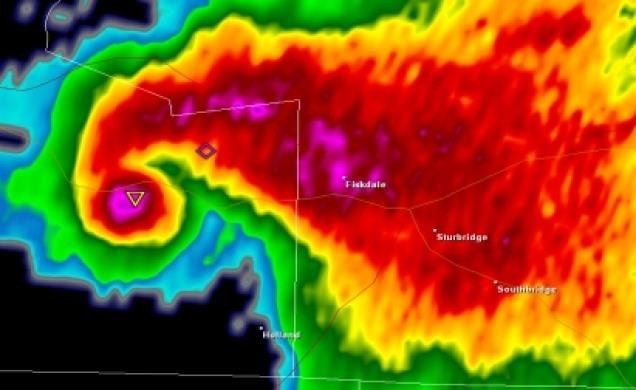-
Posts
76,571 -
Joined
-
Last visited
Content Type
Profiles
Blogs
Forums
American Weather
Media Demo
Store
Gallery
Everything posted by weatherwiz
-
It's just going to be an ugly weekend. But all will be forgotten once we are cranking in the 90's and oppressive humidity.
-
oof...yeah the euro is pretty ugly looking.
-
ahhh I see...yeah I wasn't incorporating the Euro into this...was just basing off NAM/GFS. Haven't looked at euro yet.
-
70's Saturday and struggling for 70 Sunday? Seemed to me like (at least for BDL) NAM/GFS (6z) struggled with 70 at BDL Saturday.
-
Sunday looks to have some stronger mixing which will help. Mixing Saturday may be meh
-
Looking at GFS/NAM bufkit for BDL. They both really struggle to get BDL to 70 on Saturday. Sunday should get into the lower 70's but Saturday may really struggle.
-
PLEASEEEEEEE
-
A rather vigorous trough (which spatial scale is too big to be considered shortwave but maybe too small to be considered longwave?) slowly propagates across southeastern Canada Thursday and Friday. A warm front will push through portions of New England Thursday night increasing low-level moisture/humidity along with resulting in scattered showers and thunderstorms. Meanwhile, a cold front will be pushing east across New York and Pennsylvania. Computer forecast models have trended a bit on the slower side with the passage of the cold front across southern New England Friday with the front now looking to move across the region during the early afternoon. Given the warm/moist low-level airmass ahead of the cold front, a slower FROPA would allow the potential for instability to build ahead of the front. With the potential for temperatures to climb into the 80's with dewpoints surging through the 60's, the potential will exist for upwards of 1000-1500 J/KG of MLCAPE to develop ahead of the front. Modest mid-level lapse rates will inhibit stronger destabilization from materializing. Given the vigorous trough, dynamics are forecast to be quite impressive for this time of year with a 500mb speed max of 60-70 knots moving across the region from the west with a west-southwesterly llvl jet of 30-35 knots. Given the above, scattered showers and thunderstorms are expected to develop ahead of the cold front by late Friday morning and move across the region through the afternoon. Given the strong shear aloft, thunderstorms should quickly become organized and grow upscale into a solid or broken line. Combination of 1000-1500 J/KG of MLCAPE and rather steep llvl lapse rates would promote the potential for damaging wind gusts. Strong shear would also yield the potential for some hail and perhaps an isolated tornado. Greatest potential appears to be south and east of I-91 or south and east of a ORH-BDL-DXR line.
-
I MUCH prefer 71 to 70
-
Where's @OceanStWx What does the black contoured MCD mean (obviously has something to do with TOR watch b/c it says) Mesoscale Discussion 1176 NWS Storm Prediction Center Norman OK 0122 PM CDT Wed Jun 15 2022 Areas affected...northeast IA...extreme southeast MN...portions of southern/central WI and extreme northwest IL Concerning...Severe potential...Tornado Watch likely Valid 151822Z - 152015Z Probability of Watch Issuance...95 percent SUMMARY...Convection is expected to develop across northeast IA and spread northeast in the next couple of hours. Tornadoes, damaging gusts and hail will all be possible. A tornado watch will likely be needed by 20z. DISCUSSION...Visible satellite and radar data from KDMX indicate deepening cumulus across northeast IA to the northeast of a surface low and in the vicinity of a surface warm front. More isolated cumulus has also started to develop across southern WI. Latest water vapor imagery indicates a shortwave impulse now ejecting across eastern NE/southeast SD will lift east/northeast, providing increasing ascent across the region within the next couple of hours. Some weak inhibition likely remains in the vicinity of the surface boundary, though continued heating and increasing ascent should rapidly erode any remaining inhibition over the next hour. Strong heating south of the surface boundary across IA into central WI has allowed temperatures to warm into the mid/upper 80s amid upper 60s to low 70s F dewpoints. Relatively warm temperatures between 850-700 mb will maintain modestly steep midlevel lapse rates, but the very moist boundary layer is still supporting moderate instability across the region. Effective shear magnitudes greater than 50 kt will further support robust, well-organized convection. Some uncertainty remains with regards to convective mode, but semi-discrete supercells appear possible at least initially in convective evolution. VWP data from KARX already shows enlarged, favorably curved low-level hodographs supporting rotation. Additionally, strong low-level instability with enhance vorticity in the vicinity of the surface front suggests increased tornado potential will accompany any semi-discrete convection. With time, convection is expected to grow upscale as a 35+ kt south/southwesterly low-level jet increases by late afternoon/early evening. This will result in an increasing risk for more widespread damaging gusts, though mesovortex tornadoes also will continue to be possible given favorable low-level shear.
-
I'm not so sure we see widespread 70's...even down here. That's a pretty chilly airmass and looking at soundings, even with the mixing being advertised we may struggle to get into the 70's. NNE could be really screwed b/c mixing will be very poor up there. The wildcard may be cloud cover and how quickly skies clear out Friday evening/overnight before more clouds roll in Saturday. If there is widespread clearing Friday night and temperatures drop...it's going to be tough to get them to skyrocket Saturday. Obviously the strong sun angle is going to do it's work and we'll probably see that have the best influence farther south.
-
At least models slowed down front enough to make Friday look a bit interesting!!!! Probably just teasing though
-
I strongly agree with this. I think the NAO is overrated too and there is way too much emphasis on it. I think this idea came about from early-on research but ideas have not changed as research has progressed. Very similar to back in the day when many thought that a weak La Nina meant massive winters b/c of 95-96. But with these teleconnection patterns and indices it is way more complicated than "positive vs. negative". The structure of the anomalies, where the anomalies are located, how the structure is evolving all matters so much. I also don't think drawing a correlation to just one index alone provides much overall value with the exception being whether that index is in a very strong phase and is clearly dominating the pattern.
-
Looking at the height anomalies since Mar 1 (top image) and since first of June (bottom image) I think sheds a bit more light into the influences the NAO has had on the pattern. Now...I think to fully quantify this a much more in-depth and thorough analysis would have to be conducted. Anyways, this is why sometimes those charts alone are misleading as they don't give insight into structure and placement of the anomalies. Since March and June 1 you can see why the charts are yielding a more +NAO look as opposed to negative as the majority of the anomalies which lead to a +NAO are smack dab in the middle of the NAO domain (this is especially true since June 1. But looking closer, we can see a tripole of [positive] anomalies present. Once just south of Greenland which would indicate a more southward displaced NAO and one just east of Greenland...and in between we've seen that pesky vortex northeast of Maine which has put a block on persistent higher heat/humidity from moving into our region. We've also seen a persistent troughing signal from the northern Plains poking into the Northeast. Great point too about the PNA. If you look at the structure of the PNA and then combined that with the southward-displaced block of the Arctic...that's pretty classic to get more of a trough signal here. If/when these features subside we are going to roast.
-
It incorporates a bunch of different parameters and correlates to severe and significant severe potential. I think it was a widely used index back in the day but there have been so much advances in severe weather study that I don't think it's really as widely used anymore. I used to go crazy with that index in the late 2000's
-
Sun won’t do much at night
-
Yup...timing blows for everyone else. Could be some decent damaging wind potential. Quite a bit of shear and pretty steep llvl lapse rates being advertised.
-
If we get severe Friday I'll be fine with 35-40 Saturday with cold, drizzle, and cat paws
-
Tampa I think has a decent fan base...you may be thinking of the Florida Panthers
-
It's like watching the Tampa Bay Lightning win cups year after year
-
At least it has a severe threat Friday!!!
-
I think you accidentally plotted heights as opposed to temperature anomalies. I would have thought though it would still show positive departures in the 100mb height anomaly, but that could be a result of the auto-generated legend.
-
That is quite an unseasonably cool airmass still being projected on the models. Not taking any airmass modification into account, I think there is great validity for such potential. But before getting into that, when you look at the source region for that airmass there might not be much room for modification. While this airmass would certainly result in very comfortable daytime temperatures, should we achieve strong mixing (which would be likely with a steep lapse rate), we'll get to at least climo with maybe some areas a tick or two below. But like you said...it's the overnight period which could be of greatest interest. Given the presence of very dry air and rather low (for time of year) theta-e values, combined with some potential for strong radiative cooling....the favored cold spots could certainly plunge down into the mid-30's and even some of the major climo stations could get into the 40's. Should any full de-coupling occur profiles are favorable for a downward spiral from daytime high's.
-
Don't be sorry. I thought it was good discussion. For one, it's interesting to see how we perceive something to be but then you look at data and the data doesn't reflect what was perceived.
-
I think the fact that we've been above-average with low/comfortable levels of humidity certainly plays a factor too.





